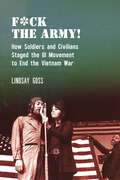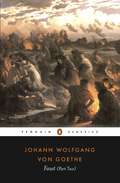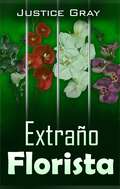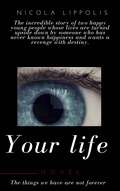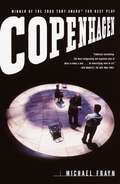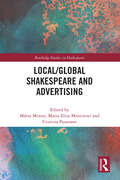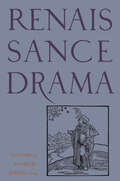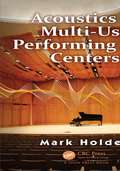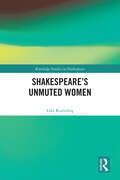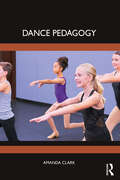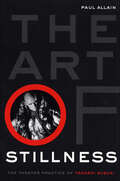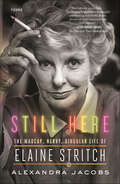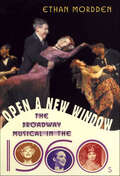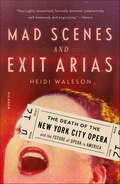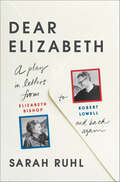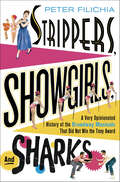- Table View
- List View
F*ck The Army!: How Soldiers and Civilians Staged the GI Movement to End the Vietnam War (Performance and American Cultures #7)
by Lindsay GossReveals the theatrical dimensions of civilian support for the revolutionary GI Movement of the 1960s-70sPerformance played a role both crucial and complicated in the antiwar activism of the 1960s and 1970s. As soldiers and civilian actors, activists, and celebrities worked together to end the Vietnam War, their theatrical acts of solidarity and resistance connected liberation struggles across the lines of race, gender, enlisted status, and nationality.F*ck The Army! offers the first, fully narrated history of the FTA, an antiwar variety show featuring Jane Fonda that played to tens of thousands of active-duty troops over the course of nine months in 1971. From its very conception, the civilian-led show was directed towards the project of making visible the growing antiwar movement organized by GIs, inspired by but also acting as a rebuttal to the increasingly out-of-touch USO tours presented by Bob Hope. Through an analysis of the FTA’s tactical performances of solidarity and resistance, Lindsay Goss brings into view the theatrical dimensions of the GI movement itself, revealing it as representative of the revolutionary and theatrical politics and tactics of the period. The volume highlights how, due to the movement’s subsequent historical erasure, a renewed anti-theatricality emerged from the 1960s and became a potent feature of contemporary political discourse.The author’s deft methodological and analytic strategies, in tandem with her elegantly accessible style demonstrate how seemingly little-known performance practices can activate consequential understandings of what we thought we knew about the recent past. At the same time, she encourages essential conversations about pressing contemporary issues that demand our attention. At its core, F*ck The Army! reveals the fundamentally theatrical character of radical activism when it seeks to challenge the status quo.
Faust: (Part Two) (Thrift Editions Ser.)
by Johann Wolfgang GoetheThe second part of Goethe's masterpiece opens with Faust struggling to recover from the death of his beloved Gretchen. The quick-witted demon Mephistopheles soon persuades him to look beyond his sorrow and enter the world of politics and power, but the great scholar is still eager for new sensations, and asks Mephistopheles to reveal Helen of Troy to him in a vision. Overwhelmed by her beauty, Faust demands she be brought back from the underworld - but even this fails to bring him contentment, and his appetite for knowledge remains unsated. Completed a few months before Goethe's death, this rich and allusive work weaves together a wealth of diverse philosophical ideas and influences, reworking the medieval myth of Dr Faustus and speculating upon the search for truth in the Age of Enlightenment.
Extraño Florista
by Justice GrayUn florista que quiere ser famoso es muy firme en ganar un prestigioso premio en una convención de floristas, así que está devanándose el cerebro intentando llegar con algo original. Él pensó en varias flores que podrían ser, pero luego pensó que muchos pensarán igual. Entonces una noche él tiene un sueño --él necesitaría tener la pintura de una flor, o flores-- que cobrarían vida. Cuando se despierta primero piensa que es absurdo, pero luego piensa que es posible. Él recordó la vez que estaba en el bosque lluvioso, cerca del gran arrecife de corales en Australia, cuando caminó por un puente, y notó como las plantas casi agarran sus manos mientras crecían rápidamente. Pensó que podía hacerlo, pero con una flor en vez de una planta, pero necesitaría alguna forma para que creciera, entonces pensó en la idea de pintar una flor para que llegara a la vida. Él invitó a un conocido artista a su casa para pintar una orquídea que cobrara vida, el artista pensó que él estaba loco y terminó siendo prisionero en su casa. El artista fue creativo con varias ideas, pero se dio cuenta que no podía, pero que quizás otro artista sí. Había un artista que hacía excelentes pinturas en cristales, incluyendo flores, invitó a la persona a ir a su lujosa casa. La persona aceptó la invitación. Mientras tanto Enrique quería que pintara una orquídea que cobrara vida, el artista pensó que estaba loco y quería escapar. Los dos artistas fueron encerrados en una habitación pensando que era imposible salir de ahí. Los dos intentaron escapar, pero después de un tiempo se tomaron un descanso. Un día, los artistas se despertaron por un ruido en la cocina. Se veía que Enrique había llegado y fue a la cocina a hacer un sandwich. Enrique estaba cantando junto a la radio, que parecía sonar más fuerte, los dos artistas despertaron, ambos planearon escapar, pero el primer artista dejó atrás al segundo para valerse por sí mi
YOUR LIFE
by Nicola LippolisMaria and Sam have been together since university. They love each other sincerely, they have a happy life, also professionally. They reach the point where they want a child. Their serenity will, however, be shattered by someone they cannot even imagine and who has decided to pull the strings of their fate, someone who wants above all to disrupt Sam's life. This man is a psychotic boss of the Miami underworld who will try to carry out his macabre criminal plan to make Sam lose the most precious things he has: Maria, his job and his freedom.
Copenhagen (Student Editions Ser.)
by Michael FraynTONY AWARD WINNER • An explosive re-imagining of the mysterious wartime meeting between two Nobel laureates to discuss the atomic bomb.&“Endlessly fascinating…. The most invigorating and ingenious play of ideas in many a year…. An electrifying work of art.&” —Ben Brantley, The New York Times In 1941 the German physicist Werner Heisenberg made a clandestine trip to Copenhagen to see his Danish counterpart and friend Niels Bohr. Their work together on quantum mechanics and the uncertainty principle had revolutionized atomic physics. But now the world had changed and the two men were on opposite sides in a world war. Why Heisenberg went to Copenhagen and what he wanted to say to Bohr are questions that have vexed historians ever since. In Michael Frayn&’s ambitious, fiercely intelligent, and daring new play Heisenberg and Bohr meet once again to discuss the intricacies of physics and to ponder the metaphysical—the very essence of human motivation.
Local/Global Shakespeare and Advertising (Routledge Studies in Shakespeare)
by Márta Minier Cristina Paravano Maria Elisa MontironiLocal/ Global Shakespeare and Advertising examines the local/ global and rhizomatic phenomenon of Shakespeare as advertised and Shakespeare as advertising. Starting from the importance and the awareness of advertising practices in the early modern period, the volume follows the evolution of the use of Shakespeare as a promotional catalyst up to the twenty-first century. The volume considers the pervasiveness of Shakespeare’s marketability in Anglophone and non-Anglophone cultures and its special engagement with creative and commercial industries. With its inter-and transdisciplinary perspective and its international scope, this book brings new insights into Shakespeare’s selling power, Shakespeare as the object of advertising and Shakespeare as part of the advertising vehicle, in relation to a range of crucial cultural, ideological and political issues.
Renaissance Drama, volume 52 number 1 (Spring 2024)
by Renaissance DramaThis is volume 52 issue 1 of Renaissance Drama. Renaissance Drama explores the rich variety of theatrical and performance traditions and practices in early modern Europe and intersecting cultures. The sole scholarly journal devoted to the full expanse of Renaissance theatre and performance, the journal publishes articles that extend the scope of our understanding of early modern playing, theatre history, and dramatic texts and interpretation, encouraging innovative theoretical and methodological approaches to these traditions, examining familiar works, and revisiting well-known texts from fresh perspectives.
Acoustics of Multi-Use Performing Arts Centers
by Mark HoldenMulti-use performing arts centers are among the most complex of all building types and require excellent and flexible acoustics in order to suit the facility's varied programming needs. This technical and practical book by renowned acoustician Mark Holden delivers a full discussion of the challenges and solutions that arise in the concept, design, construction and commissioning phases. It serves students, architects, engineers, designers and acousticians.
Creative Production and Management in the Performing Arts: Modus Operandi (ISSN)
by Vânia RodriguesThis volume takes stock of the ways in which the regimes of artistic creation and production intersect, lending special attention to emergent discourses and work models of producing and managing theatre, dance, and performance – through the lenses of creative producers.This book suggests that social protection failures, longstanding institutional shortcomings, and the dilemmas of social and environmental sustainability are pushing arts management and production modi operandi towards a review of its expansionist assumptions and managerial hyper-productivist processes. By documenting singular ‘counter-management’ experiences in Portugal, Belgium, France, and Brazil, this study makes a strong claim for a reassessment of the role of producers and art managers as reflective practitioners and as pivotal elements towards more sustainable artistic practices.This study will be of great interest to students and scholars in theatre and performance studies, policymakers, and cultural professionals.
Shakespeare’s Unmuted Women (Routledge Studies in Shakespeare)
by Gül KurtuluşShakespeare’s Unmuted Women explores women’s speeches in selected plays by Shakespeare, highlighting women’s discerning insight as a vital ingredient in these selected works. The book discusses the use of rhetoric in speeches by women as a cementing material that supports the casing of the incidents. Women holding forth on the issues related to the common concerns emerged in the plays perform a distinguishing role in strengthening the bond between decisions taken and executed by each character and make their major important contribution to the overall impact of the play. Comprising six chapters, the volume analyses Cordelia’s and Desdemona’s speeches in King Lear and Othello; Cleopatra’s and Tamora’s speeches in Antony and Cleopatra and Titus Andronicus; Beatrice’s and Rosalind’s speeches in Much Ado About Nothing and As You Like It; and Katherine’s and Lady Anne’s speeches in Henry V and Richard III, respectively. The text discusses women’s rich and profound discourse in these works to accentuate the meaningful input in verbal communication. In Shakespeare’s selected plays, women’s insightfulness and perspicuity are closely considered to emphasize how women make efficient use of rhetoric, aptly used by Queen Elizabeth I during Shakespeare’s time. Queen Elizabeth’s outstanding public speeches inspired those who listened to her and Shakespeare’s women are partial embodiments of her.
Dance Pedagogy
by Amanda ClarkDance Pedagogy is a comprehensive resource designed for dance students and teaching artists to develop skills and strategies in the multifaceted practice of teaching dance.This invaluable resource features essential components and considerations necessary for the dance teacher in any setting, including the private and community sector, university setting, and professional venues. Five distinct units provide insight into the paradigm, learning process, class environment factors, planning, and delivery of the dance class in a broad context through the use of examples within the dance forms of ballet, jazz, modern, tap, and hip-hop. Readers intently explore cognitive and motor learning, strategies for developing curricula and lesson plans, and methods of delivering material to students. Basic principles of anatomy, understanding student behavior and participation, the importance of diversity, equity, inclusion and accessibility (IDEA), music concepts for the dancer, injury prevention, and classroom management are included to provide a well-rounded approach to the many challenges faced in the classroom.Dance Pedagogy provides the most holistic approach available in the art of teaching dance and is a core textbook for academic courses related to Dance Teaching Methods as well as an invaluable handbook for practicing dance teachers.
The Art of Stillness: The Theater Practice of Tadashi Suzuki
by Paul AllainFor over forty years, Tadashi Suzuki has been a unique and vital force in both Japanese and Western theater, creating and directing many internationally acclaimed productions including his famous production of The Trojan Women, which subsequently toured around the world. An intergral part of his work has been the development and teaching of his rigorous and controversial training system, the Suzuki method, whose principles have also been highly influential in contemporary theater. Paul Allain, an experienced practitioner of the Suzuki method, re-evaluates Suzuki's work, giving a lucid overview of his development towards an international theater aesthetic. He examines Suzuki's collaborators, the importance of architecture and environment in his theater and his impact on performance all over the world. The Art of Stillness is a lively, critical study of one of the most important and uncompromising figures in contemporary world theater.
Still Here: The Madcap, Nervy, Singular Life of Elaine Stritch
by Alexandra JacobsOne of The New Yorker's favorite nonfiction book of 2019 | A New York Times Book Review Editors' ChoiceNamed one of Vogue's "17 Books We Can't Wait to Read This Fall""Compulsively readable . . . ravenously consuming . . . manna from heaven . . . If ever someone knew how to put a genuinely irresistible book together, it's Jacobs in Still Here." —Jeff Simon, The Buffalo NewsStill Here is the first full telling of Elaine Stritch’s life. Rollicking but intimate, it tracks one of Broadway’s great personalities from her upbringing in Detroit during the Great Depression to her fateful move to New York City, where she studied alongside Marlon Brando, Bea Arthur, and Harry Belafonte. We accompany Elaine through her jagged rise to fame, to Hollywood and London, and across her later years, when she enjoyed a stunning renaissance, punctuated by a turn on the popular television show 30 Rock. We explore the influential—and often fraught—collaborations she developed with Noël Coward, Tennessee Williams, and above all Stephen Sondheim, as well as her courageous yet flawed attempts to control a serious drinking problem. And we see the entertainer triumphing over personal turmoil with the development of her Tony Award–winning one-woman show, Elaine Stritch at Liberty, which established her as an emblem of spiky independence and Manhattan life for an entirely new generation of admirers.In Still Here, Alexandra Jacobs conveys the full force of Stritch’s sardonic wit and brassy charm while acknowledging her many dark complexities. Following years of meticulous research and interviews, this is a portrait of a powerful, vulnerable, honest, and humorous figure who continues to reverberate in the public consciousness.
Open a New Window: The Broadway Musical in the 1960s (The History of the Broadway Musical)
by Ethan MorddenIn the 1960s, the Broadway musical was revolutionized from an entertainment characterized by sentimental standards, such as Camelot and Hello, Dolly!, to one of brilliant and bittersweet masterpieces, such as Cabaret and Fiddler on the Roof. In Open a New Window, Ethan Mordden continues his history of the Broadway musical with the decade that bridged the gap between the romantic, fanciful entertainments of the fifties, such as Call Me, Madam, to the seventies when sophisticated fare, such as A Little Night Music and Follies, was commonplace. Here in brilliant detail is the decade and the people that forever transformed the Broadway muscial.
Mad Scenes and Exit Arias: The Death of the New York City Opera and the Future of Opera in America
by Heidi WalesonFrom the Wall Street Journal's opera critic, a wide-ranging narrative history of how and why the New York City Opera went bankrupt—and what it means for the future of the artsIn October 2013, the arts world was rocked by the news that the New York City Opera—“the people’s opera”—had finally succumbed to financial hardship after 70 years in operation. The company had been a fixture on the national opera scene—as the populist antithesis of the grand Metropolitan Opera, a nurturing home for young American talent, and a place where new, lively ideas shook up a venerable art form. But NYCO’s demise represented more than the loss of a cherished organization: it was a harbinger of massive upheaval in the performing arts—and a warning about how cultural institutions would need to change in order to survive.Drawing on extensive research and reporting, Heidi Waleson, one of the foremost American opera critics, recounts the history of this scrappy company and reveals how, from the beginning, it precariously balanced an ambitious artistic program on fragile financial supports. Waleson also looks forward and considers some better-managed, more visionary opera companies that have taken City Opera’s lessons to heart.Above all, Mad Scenes and Exit Arias is a story of money, ego, changes in institutional identity, competing forces of populism and elitism, and the ongoing debate about the role of the arts in society. It serves as a detailed case study not only for an American arts organization, but also for the sustainability and management of nonprofit organizations across the country.
Dear Elizabeth: A Play in Letters from Elizabeth Bishop to Robert Lowell and Back Again
by Sarah RuhlFrom playwright Sarah Ruhl, Dear Elizabeth is a moving, innovative play based on one of the greatest correspondences in literary history--the letters of Robert Lowell and Elizabeth Bishop. From 1947 to 1977, Robert Lowell and Elizabeth Bishop exchanged more than four hundred letters. Describing the writing of their poems, their travel and daily illnesses, the pyrotechnics of their romantic relationships, and the profound affection they had for each other, these missives are the most intimate record available of both poets and one of the greatest correspondences in American literature. The playwright Sarah Ruhl fell in love with these letters and set herself an unusual challenge: to turn this thirty-year exchange into a stage play, and to bring to life the friendship of two writers who were rarely even in the same country. As innovative as it is moving, Dear Elizabeth gives voice to a conversation that lived mostly in writing, illuminating some of the finest poems of the twentieth century and the minds that produced them.
Strippers, Showgirls, and Sharks: A Very Opinionated History of the Broadway Musicals That Did Not Win the Tony Award
by Peter Filichia"Wait..Gypsy didn't win the Tony for Best Musical?"That's a question that gets asked over and over again, every time a new Rose takes to the runway in the Broadway classic "Gypsy". In "Strippers, Showgirls and Sharks", the popular syndicated theatre critic Peter Filichia chronicles the history of the American musical by looking at those shows that did not win the Tony Award for Best Musical. It happens every spring: The American Theatre Wing bestows its annual awards. Only those shows that have reached Broadway are nominated and while all Tony Awards are created equal in height, width and depth, the universally acknowledged biggest prize is the Best Musical Tony. The envelope is opened. The winner is announced and, then, the screeching begins. "Oh no! They gave it to that?" Did the best musical always win the Best Musical prize? Were there other factors that kept a more deserving show from copping the prize? Peter Filichia answers all these questions and more in "Strippers, Showgirls and Sharks" as he looks at many of the 153 previous Best Musical Nominees that didn't win the big prize. What were the biggest omissions? "Gypsy" had the distinct displeasure of not being either the first or second choice of the committee. In 1959 when Ethel Merman and a variety of strippers took the stage, the Tony for Best Musical was a tie between "The Sound of Music" and "Fiorello". In 1971, Stephen Sondheim's "Follies" and its ghostly showgirls lost to a "groovy" re-tuning of "Two Gentlemen of Verona" that hasn't passed the test of time. And, in 1957, "West Side Story", its Jets and Sharks, were bested by the fine people of River City Iowa singing their Americana hearts out in "The Music Man". If you love Broadway, scratch your head on Tony Award night and still can't figure out how a show you loathed won the Tony for Best Musical, you will love riding through the years with Peter Filichia, one of America's most respected and popular theatre critics.
